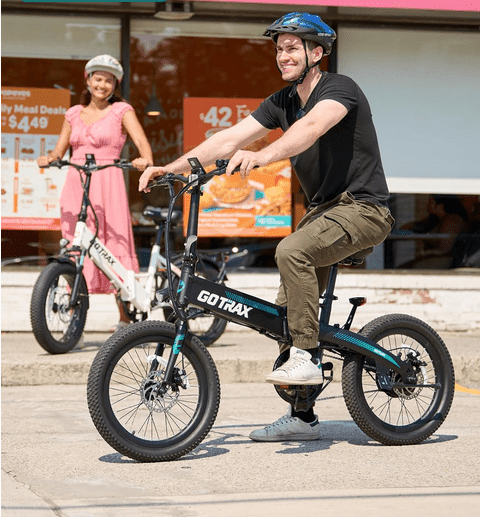Unit Pack Power Official 20Ah Electric Bike Battery Review
Today, we'll be taking an in-depth look at the Unit Pack Power Official 20Ah Electric Bike Battery. This battery is one of the most popular on the market and it's easy to see why. It's a high-quality battery that comes with plenty of features, including battery lock, overcharge protection, and over-discharge protection. We'll be taking a closer look at all of these features and more, so you can decide if this is the right battery for your electric bike.

The Unit Pack Power Official 20Ah e-bike battery is a great option for anyone looking to power an e-bike with a Bafang mid-drive system. However, you’ll need a powerful drive and a pretty high AH rating to make the most of this battery though, so bear that in mind when shopping.
One year warranty
20A discharge rate
Toll-free support
Bafang motors
Can be used with either the rear wheel or the front wheel
The charger can get hot
Initial size and weight gain
Model: Unit Pack Power Power: 1000W Max constant current: 30A Brand: Unit Pack Power Style: 52V 13Ah Lock: Yes
Installation of the Unit Pack Power Official 20Ah EBike Battery
The Official 20Ah EBike Battery is a powerful battery that can give your bike the power it needs to go the distance. With lifetime tech support and over-discharge protection, this battery is a great choice for those who want to ensure their e-bike has the power it needs to go the distance.
Testing the functions of the Unit Pack Power Ebike Battery
Testing the functions of the Unit Pack Power Ebike Battery
The Unit Pack Power Ebike Battery is a battery pack that is designed to power electric bicycles. It is a Lithium-ion battery pack that has a life expectancy of up to 5 years. The Unit Pack Power Ebike Battery is made with short circuit protection and temperature protection.
The first thing that we need to do when testing the functions of the battery is to check if the battery is properly installed in the electric bicycle. The next thing that we need to do is to check the voltage of the battery. We can do this by using a voltmeter. If the voltage of the battery is below 36 volts, it means that the battery is not fully charged.
The next thing that we need to do is to test the capacity of the battery. To do this, we need to discharge the battery until it is completely empty. We can do this by using a discharge tester. After the battery is discharged, we need to check the voltage again. If the voltage of the battery is below 30 volts, it means that the battery is not fully charged.
The last thing that we need to do is to check the current of the battery. We can do this by using an ammeter. If the current of the battery is below 10 amps, it means that the battery is not fully charged.
Operating the Unit Pack Power Official 20Ah L-Faster Battery
If you're looking for a reliable and powerful battery, the Unit Pack Power Official 20Ah L-Faster Battery is a great option. This battery is designed for high performance, and it features overcharge protection and over-discharge protection. The battery also has a built-in charger, so you can easily recharge it when necessary.
To use the Unit Pack Power Official 20Ah L-Faster Battery, simply connect it to your device using the included cables. Once it's connected, the battery will begin charging your device. You can check the battery level by pressing the power button on the front of the unit. When the battery is fully charged, the LED indicator will turn green.
If you're looking for a powerful and reliable battery, the Unit Pack Power Official 20Ah L-Faster Battery is a great option. With overcharge protection and over-discharge protection, this battery is designed for high performance. The built-in charger makes it easy to recharge, so you can keep using it for a long time.
Charge Time of the Battery: Low-End Charge and Maximum Charge
Most batteries will fully charge in about two to four hours. A battery's charge time can be affected by several factors, including the type of battery, the capacity of the battery, the charger used, the temperature of the environment, and the level of discharge of the battery.
The time it takes to charge a battery is important, but so is the rate at which the battery is charged. A battery can be charged slowly or quickly, and each has its benefits and drawbacks.
Slow charging, also called "trickle charging," is good for batteries that are not completely discharged and for batteries that are going to be stored for a long period of time. Trickle charging keeps a battery from overcharging and prevents damage to the battery.
Quick charging, on the other hand, is better for batteries that are completely discharged. Quick charging can charge a battery in one to two hours. While quick charging is faster, it can also overheat the battery and shorten its lifespan.
To get the most out of your battery, it's important to know how to charge it properly. When in doubt, always err on the side of slower charging.




